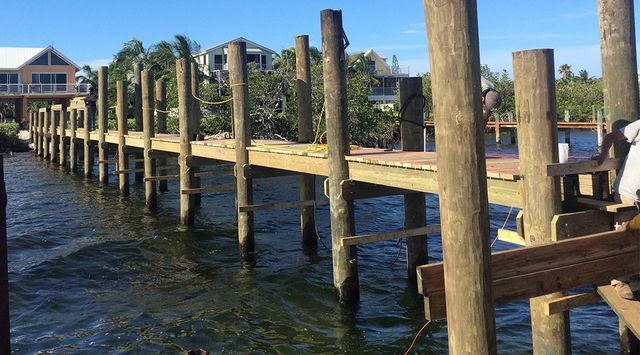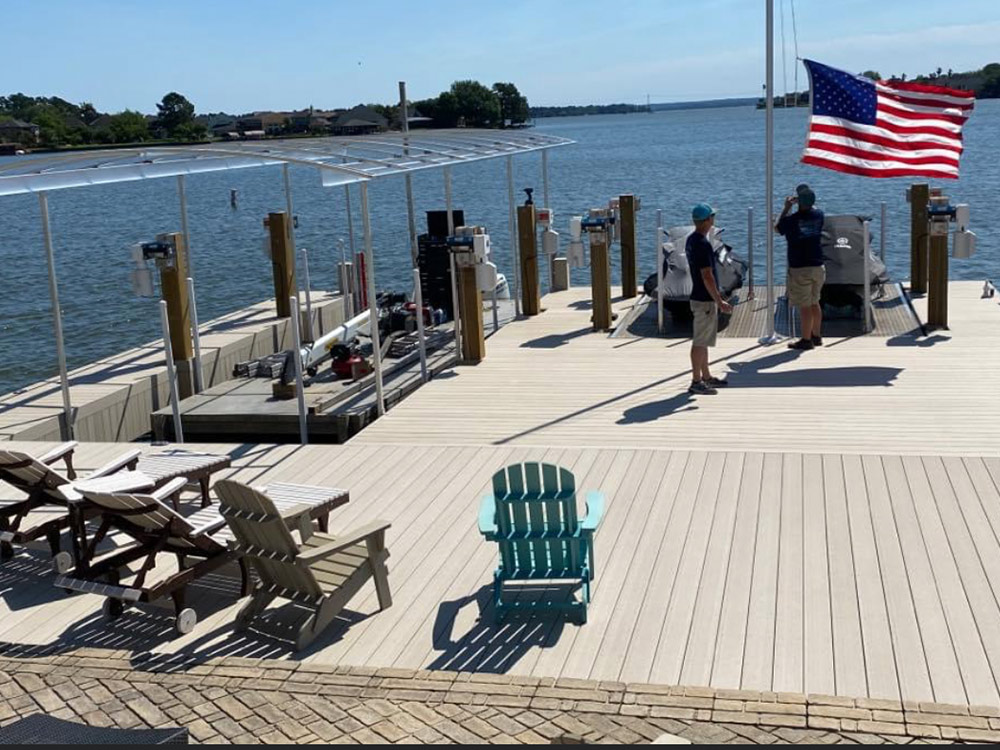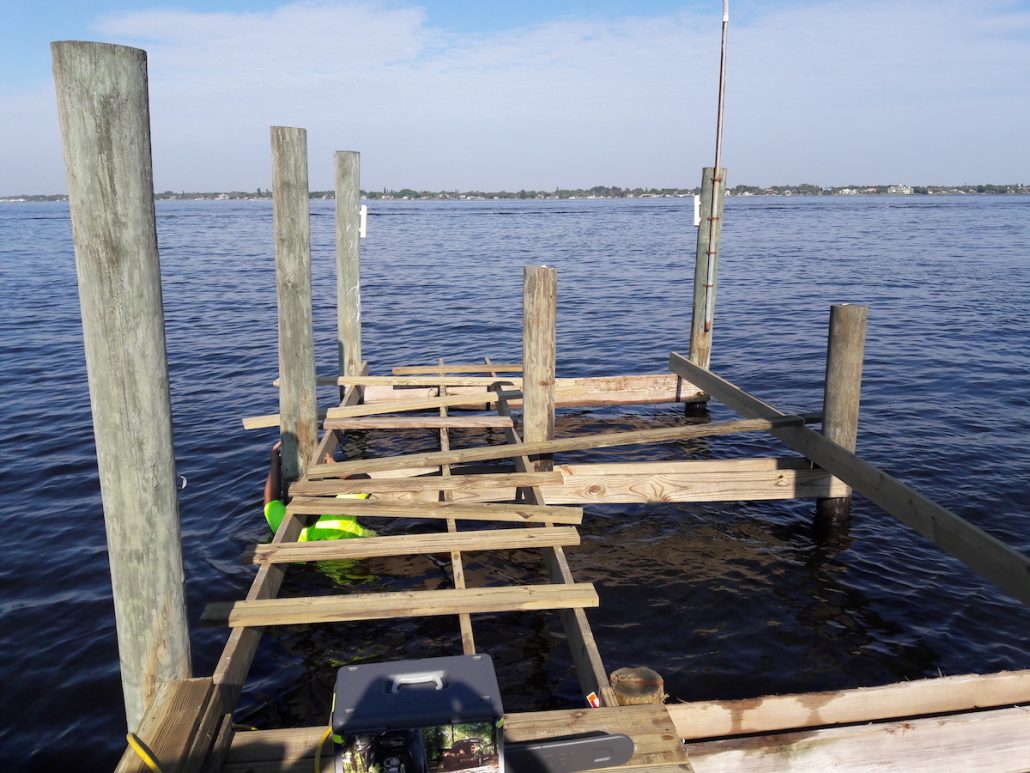Why Routine Maintenance Can Minimize Future Dock Repairs
Why Routine Maintenance Can Minimize Future Dock Repairs
Blog Article
Effective Dock Repair Techniques: Ensuring Structural Integrity
Making sure the architectural integrity of docks through effective repair service techniques is critical for the durability and security of aquatic facilities. Ultimately, choosing the ideal repair service products, such as corrosion-resistant alloys and composite products, is vital for longevity.
Analyzing Dock Damages
Analyzing dock damage is a critical initial step in making sure the structural integrity and safety of any type of docking center. This preliminary evaluation includes an extensive assessment to recognize both noticeable and concealed problems. Key elements to take a look at include the dock's foundation, pilings, decking, and equipment. Each part has to be scrutinized for indications of wear, rot, corrosion, or various other types of degradation that can endanger the architectural stability.
Structural designers or qualified examiners typically do these assessments utilizing specialized strategies and devices. For circumstances, undersea evaluations might utilize sonar tools or from another location ran lorries (ROVs) to discover submerged damage. Above water, visual evaluations are complemented by utilizing wetness meters and various other analysis devices to discover underlying issues not immediately visible to the nude eye.

Deciding On Repair Materials
Choosing the appropriate repair work materials is a crucial step in the dock remediation procedure, one that directly influences the longevity and efficiency of the fixed structure. Material selection should be driven by factors such as ecological conditions, load-bearing demands, and compatibility with existing dock parts. For instance, wood is a standard option for docks because of its all-natural durability and aesthetic allure. Nevertheless, picking the appropriate sort of timber, such as pressure-treated lumber or normally rot-resistant types like cedar or teak wood, is essential to withstand marine atmospheres.
Along with timber, composite products are increasingly popular as a result of their sturdiness and reduced upkeep requirements. Compounds, typically made from a blend of plastic and wood fibers, supply excellent resistance to rot, insects, and UV damage. For metal docks, choosing corrosion-resistant alloys such as galvanized steel or marine-grade aluminum is vital to stop rust and make sure structural stability in saline water conditions.
Epoxy resins and marine-grade sealers are crucial for repairing fractures and securing joints, providing a water-proof obstacle and boosting the dock's total stamina. By thoroughly selecting high-grade products, dock repairs can accomplish lasting results, thereby safeguarding against future deterioration and making certain risk-free, dependable use.
Architectural Reinforcement Strategies
Efficient structural reinforcement methods are important in ensuring the stability and long life of dock repairs. This technique is particularly effective for anchors exposed to heavy loads or harsh ecological problems.
An additional essential technique is the application of fiber-reinforced polymers (FRP) These materials supply high strength-to-weight proportions and superb resistance to corrosion, making them optimal for enhancing concrete check my blog or wood anchors. FRP can be used in sheets or strips and bound with epoxy materials to enhance architectural stability.
Bracing and anchoring systems likewise play a vital duty in architectural reinforcement. Cross-bracing, making use of steel or wooden light beams, can combat side pressures, minimizing swaying and activity. Securing systems, such as helical piers or driven piles, provide a stable structure by transferring loads to much deeper, a lot more stable dirt layers.
Lastly, the integration of load-distribution plates can assist disperse weight a lot more evenly across the dock's surface, mitigating localized anxiety factors. These techniques collectively guarantee that anchors remain secure and robust, efficient in standing up to the roughness of their functional atmosphere.
Advanced Repair Methods

An additional advanced method entails underwater welding, which permits fixings to be performed without the requirement to dewater the area. This method is particularly helpful for attending to architectural problems in submerged dock components, guaranteeing marginal interruption to procedures. Enhanced welding methods, paired with robot systems, provide precision and reliability, therefore expanding the life expectancy of the dock.
Furthermore, cathodic security systems are carried out to avoid rust in metallic dock structures. By utilizing sacrificial anodes or satisfied current systems, these techniques efficiently mitigate the electrochemical procedures Continue that cause product deterioration.
Finally, progressed surveillance innovations, such as structural health monitoring (SHM) systems, supply real-time data on the condition of dock frameworks. These systems enable positive upkeep and prompt treatments, inevitably making sure the long-lasting structural honesty of the dock.
Upkeep and Prevention
Maintenance and avoidance are basic concepts that underpin the durability and security of dock structures. Regular inspections are extremely important, permitting very early discovery of damage, possible weaknesses, and ecological effects. A proactive approach, including routine look for rust, rot, and architectural shifts, alleviates expensive repair services and lengthens the dock's operational life.
Preventive measures need to consist of using safety coverings to metal components to defend against rust and making use of treated wood to stand up to decay. Furthermore, making sure appropriate drain and ventilation can avoid water build-up, which is a typical reason for structural deterioration. Including quality products and adhering to manufacturer guidelines during building and repair work phases likewise play important roles in enhancing toughness.

Educating employees in dock upkeep best methods ensures regular application of preventive procedures. Leveraging technological breakthroughs, such as drones for evaluations and sensing units for real-time monitoring, can further enhance upkeep efforts. By focusing on upkeep and avoidance, dock owners can guarantee architectural honesty, functional safety, and economical management over the dock's life-span.
Final Thought
Finally, maintaining the structural stability of marine facilities requires detailed dock repair work techniques. Detailed inspections making use of innovative devices discover both visible and hid damages, while the option of ideal repair service materials improves sturdiness. Implementing structural reinforcement approaches addresses stress factors efficiently. Advanced repair work techniques, combined with regular upkeep techniques, make sure the dock remains secure and operational under varied ecological problems. Taking on these methods significantly prolongs the life-span and performance of marine framework.
Making certain the structural stability of anchors via effective fixing techniques is extremely important for the durability and safety and security of marine facilities.Choosing the appropriate repair service materials is a critical action in the dock reconstruction procedure, one that straight influences the longevity and efficiency of the fixed structure.Effective structural discover this info here support strategies are vital in guaranteeing the stability and durability of dock repair services. By prioritizing maintenance and avoidance, dock owners can make certain structural honesty, functional safety and security, and affordable management over the dock's life-span.
In verdict, keeping the architectural honesty of aquatic centers requires extensive dock repair methods.
Report this page